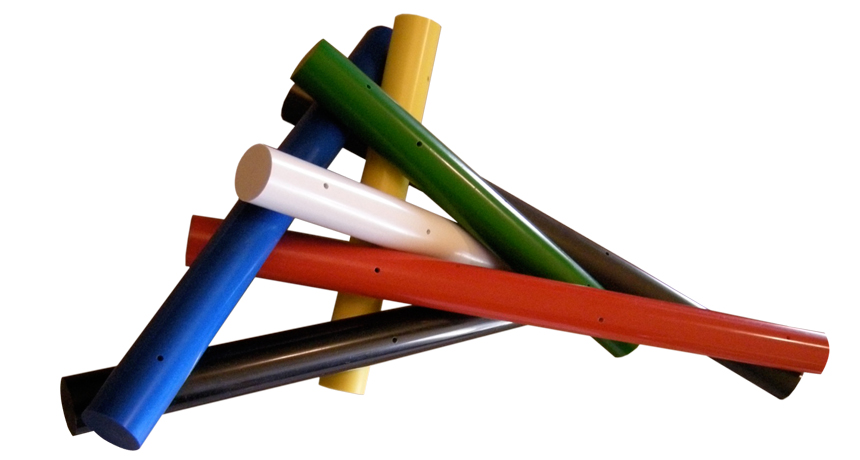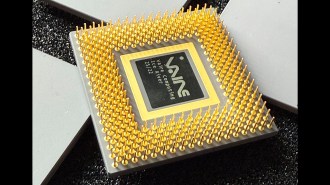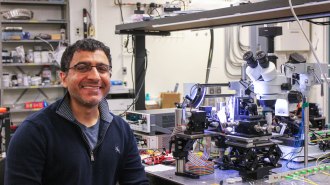A tale of touching tubes
Mathematicians find way to put seven cylinders in contact without using their ends

NO IFS, ASHES OR BUTTS Seven cylinders can each touch each other using only their sides, not their ends, mathematicians have discovered.
D. Mackenzie







